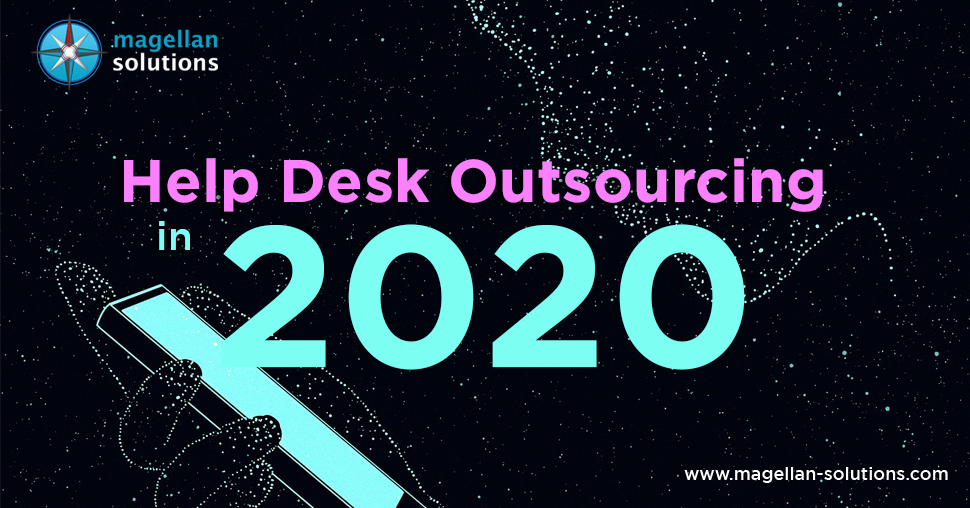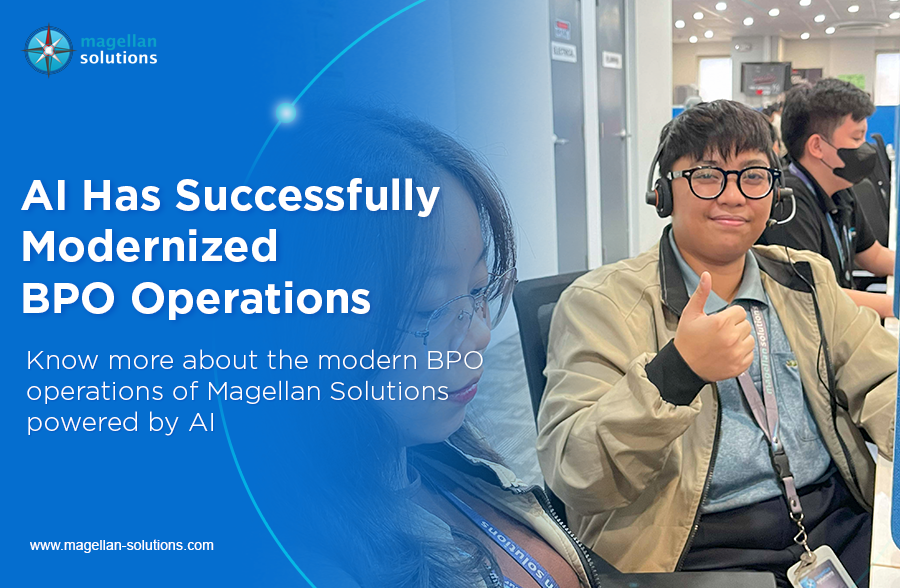Schedule a FREE call with our outsourcing expert now and get a precise quotation that meets your requirements. Don't wait - get started today!
B2B companies operate in a fast-paced environment where every client interaction matters. But as your customer base grows, so do the demands on your help desk. Slow response times, unresolved technical issues, and overwhelmed staff can weaken client relationships and impact your bottom line. Managing an in-house support team may seem ideal, but it comes with high costs, staffing challenges, and the need for constant training.
This is where an outsourced help desk becomes a strategic advantage. By partnering with a dedicated support provider, businesses gain access to skilled professionals, 24/7 availability, and scalable solutions—without the hassle of maintaining an internal team. The result? Faster resolutions, improved customer satisfaction, and cost savings allow you to focus on core business operations.
But is outsourcing the right fit for your company? Let’s explore why more B2B businesses are making the shift.
What Should You Expect From This Article?
This guide aims to help you navigate the ins and outs of help desk outsourcing. We will discuss the following:
What Is Help Desk Outsourcing?
Help desk outsourcing provides customers with information and support related to a company’s processes, products, and services. It aims to answer queries, troubleshoot problems, and facilitate solutions to resolve incidents. Help desk support may be provided in various channels to raise and answer a customer’s request. These channels include physical locations, toll-free numbers, websites, instant messaging, or email.
Customers often get confused between the help desk and the service desk. It’s important to note that the help desk focuses on end-user needs. For example, technical support assists end-users in availing or using technology services. On the other hand, the service desk focuses on corporate strategy. It deals with resolving everything within the organization’s IT Policy and Guidelines. The service desk ensures organizations meet their business goals and increase their leverage in the market.
What Are the Different Levels of Help Desk Support?
There are different levels of help desk support. Each group varies in the extent of technical assistance provided to customers. IT companies follow these support levels to save the higher-skilled resources for creating new solutions and troubleshooting complex problems. A typical IT help desk support infrastructure usually implements the following service levels:
Tier-0 Support
This refers to automated solutions that end users can access themselves without the help of a customer representative. These include automatic password resets, Websites requesting ITIL support, and knowledge base lookup. Any new request from this level can be transferred to the Tier-1 support desk for further processing.
Tier-1 Support
This support level comprises customer representatives with basic technical knowledge of their company’s products. They access resources in the technical knowledge base to find solutions for service desk requests. When they can’t resolve the reported Incident, they pass the Incident to a higher tier.
Tier-2 Support
Support personnel who handle this level have an in-depth understanding of their company’s product or service. They deal with escalated issues that Tier-1 support is not able to take. Should they be unable to settle a customer’s problem, they escalate it to Tier-3.
Tier-3 Support
This level requires subject matter experts who can handle complex issues and questions. They can find the root cause of a problem by using product codes, designs, or specifications. Once they identify the root cause, findings will be documented as a future reference.
How Does the Help Desk Workflow Process Work?
It is essential to understand the processes necessary when handling different requests. Having an understanding of such processes can lead to quicker resolutions. Also, it helps you to collaborate with support personnel more productively. Here’s the help desk workflow process in detail:
Register Incident
The Incident shall be recorded and documented in appropriate quality. If there is a problem, customers can figure it out first with self-help options, such as FAQ databases. If they can’t resolve it themselves, they will create a ticket or incident report. This adds to the queue wherein technicians will handle it when they have time.
Process service request
In this process, it processes the type of service request. It comes with the support level required within the agreed resolution time.
Immediate Incident Resolution by 1st Level Support
This process brings all necessary information to the Level 1 technician. The first-level technician analyzes all information submitted by the user and searches the knowledge base for the best solution to the problem. If they can’t resolve the issue, the first-level technical requests help from the second-level analyst.
Analyze and Resolve Incidents in 2nd Level Support.
The second-level analyst studies the request and returns the solution. If necessary, the answer is documented in the knowledge base so that the following similar occurrence at the first level can resolve the issue without contacting the second level.
Monitor and Escalate Incidents
This process continuously monitors the status of outstanding incidents. This is to introduce countermeasures as soon as possible if service levels are likely to be breached.
Proactively Inform Users
Technical Level 1 confirms the proposed solution will solve the user’s problem. If not resolved, return to the level 2 analyst. If so, level 1 sends a confirmation to the user.
Close and Evaluate the Incident
The user makes a test solution and checks if the solution works. Technical level 3 will take over the process if it does not work. Once resolved, the circle closes. Additionally, findings from the resolution are to be recorded for the future.
Maintenance of Support Knowledge Base
Findings from the processing of incidents are incorporated into the Support Knowledge Base. This will help support levels to process future incidents more efficiently.
Carry Out Incident Management Reporting
This provides insights to monitor potential problems and root causes as they recur. Reporting these problems and root causes increases the chances that repeating failures will be noticed and corrected before they escalate to more severe incidents.
What Are the Benefits of Outsourcing Help Desk Services?
A help desk service is like having a resource center for all customer service communications. It helps you to streamline your customer support tasks. When customers are happy, they stay loyal, which brings in higher revenue.
Higher Customer satisfaction
One of the main benefits of a help desk service is higher customer satisfaction. It satisfies customers when they get instant responses to their queries. With help desk services, customers know exactly where to go for technical support. Hence, they can work more successfully with your product or service and will be loyal to it long-term.
Faster ticket resolution
Help desk services can streamline the processing of incoming help desk cases. This helps your support team to have more time to address reported incidents. When an incoming incident arrives, it is automatically registered into a system, routed to the appropriate support personnel, analyzed, resolved, and documented for future reference. All these processes increase efficiency, which results in faster ticket resolution.
Improvement of product or service
Help desks can also improve the quality of your company’s products or services. The help desk daily records customer complaints, issues, and problems into a support knowledge base. This knowledge base is essential in supplying feedback to your development team. Your product designers know what to implement for improvements.
Increase in revenue growth
Help desk support improves productivity, product, customer satisfaction, and operational efficiency. With these improvements, your recurring revenue will remain steady and reliable. Also, help desk support provides superior customer support in the market. This can help you generate more leads and close deals with new customers.
How Much Does Outsourcing Help Desk Services Cost?
The average cost of outsourcing help desk services might be tricky. This is because every business has very different needs. Usually, some enterprises begin with a basic service package. This package includes remote monitoring, updates, server management, etc. However, if you opt to outsource this service, an essential package will cost you somewhere between $100-$400 per device per month. Also, there may be additional one-time charges for emergency on-site visits or strategic planning sessions. Learn more about call center pricing.
Furthermore, the cost of outsourcing IT help desk services depends on the size of your organization. But if you prioritize high-quality service at a low expense, you may consider the Philippines. It is an excellent choice for its key competencies, such as its educated workforce, efficient labor practices, industry expertise, low labor cost, and strategic location.
Here are additional factors that can determine the cost of outsourcing IT help desk services:
-
-
- The length of time of the contract
- The level of expertise of the KYC specialist hired
- Existing laws set by the government on the services you request
- The location of your business
- Other extra services
-
Meanwhile, here are companies that benefit from outsourcing help desk services:
Microsoft
This multinational technology company had outsourced its business functions, including IT help desk, desk-side services, and application support. Also, some of its internal IT services were managed by an IT consulting company in India.
Anheuser-Busch InBev
This global brewer company had outsourced its IT help desk solutions to international outsourcing providers. It outsourced its IT functions to IBM and its global communications infrastructure to BT Global Services.
Citi
This financial services company has been outsourcing its tech operations since 1992. It is among those US companies that outsource services in the Philippines. The Philippines has already provided IT-related services to this financial giant.
Ford Motor Company
This American automobile giant had also outsourced its IT and customer support overseas. Today, most of the components of a typical Ford vehicle are made offshore. Aside from manufacturing, Ford also offshores customer support services, live chat support services, and email support services.
Rio Tinto
This mining corporation in Australia has also been capitalizing on help desk-managed services. Some services their service providers care for include legal work, application management, application development, and customer service desk.
What Should You Look for in Help Desk Outsourcing Companies?
Choosing the right service provider is as important as having clear and measurable performance guidelines. After all, your service provider may impact your entire business. You can benefit from help desk services by choosing the right provider. Here are some key things to consider in looking for help desk outsourcing companies:
Industry experience
A help desk role is a highly technical job. Your service provider must have a reliable experience to deliver excellent customer service. Also, a lengthy experience equates to a better knowledge of help desk services. With adequate experience, they have the proper product knowledge and problem-solving skills that can be your organization’s best assets.
Quality control and monitoring
This matters in delivering quality services that exceed your customer’s expectations. It reflects how a service provider minimizes waste and operates at high productivity levels. Quality control and monitoring ensure the consistency and quality of a product or service. Thus, choosing a service provider that encourages quality consciousness would be best.
Culture fit
It’s essential to align your company culture with your service provider. A service provider that understands your business goals will help you succeed. Also, they are more likely to perform better for success. Hence, you should find a service provider that can be an extension of your team.
Value for money
Some outsourcing companies will charge you higher rates based on their reputation. It’s crucial to find a service provider that offers flexible rates. But remember to work only with service providers that don’t compromise quality. After all, quail’s still helps you maintain customer satisfaction.
Help Desk Outsourcing in the Philippines
The current growth rate of the help desk outsourcing industry is reported by nearly 60-70% each year. The Philippines, an ideal outsourcing location, has significantly contributed to its growth. This is due to its service improvements and quality customer service. If you’re looking for an outsourcing place with up-to-date technology and a rich talent base, the Philippines could be on your top list!
Magellan Solutions offers IT help desk outsourcing services to all businesses. Our skilled support team will help you reduce ticket volumes for better customer support. We also provide multilingual customer support for your foreign-language-speaking customers. Also, we are ISO and HIPAA certified to guarantee the safety of your information.
Are you looking for responsive and round-the-clock technical assistance to your customers? Fill out the form below to get a free consultation.

















